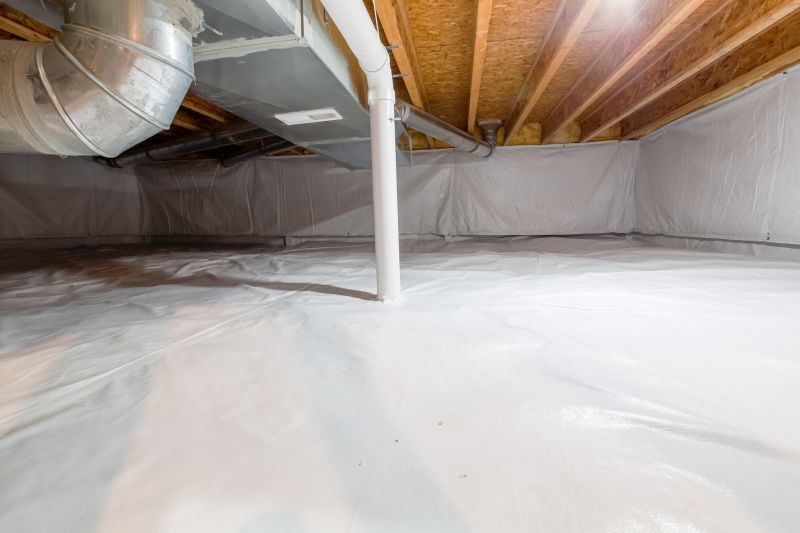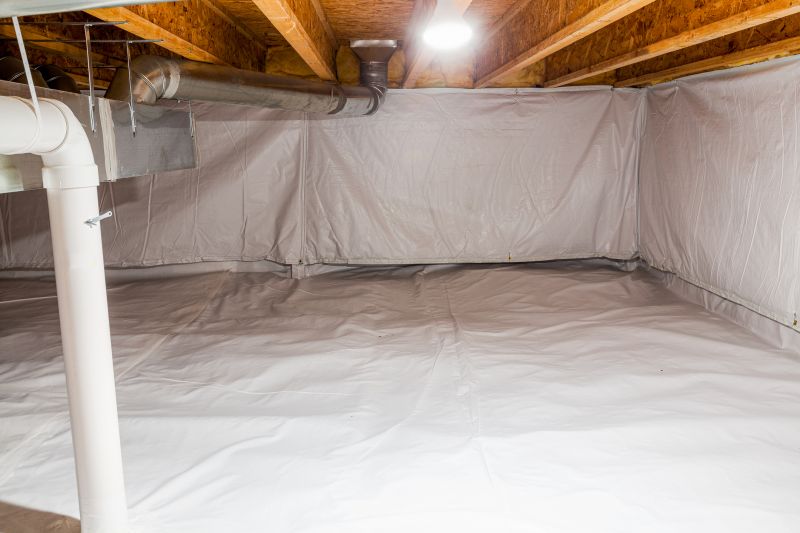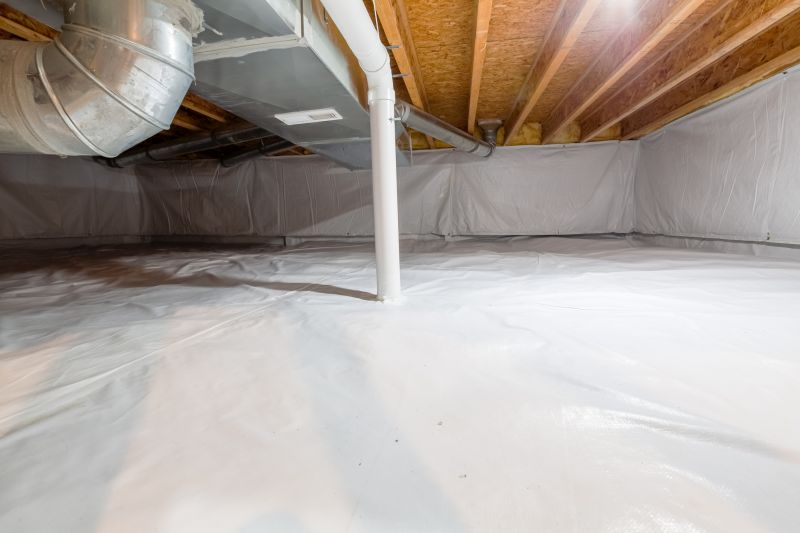Comprehensive Crawlspace Encapsulation Packages
Crawlspace encapsulation is a crucial process that involves sealing and insulating the crawlspace area to prevent moisture intrusion, improve air quality, and enhance energy efficiency. Proper encapsulation can significantly reduce the risk of mold growth, wood rot, and pest infestation, contributing to a healthier and more comfortable living environment.
Encapsulation prevents excess moisture from entering the crawlspace, reducing the risk of mold and wood decay that can compromise structural integrity.
Sealing the crawlspace helps maintain consistent indoor temperatures, leading to lower heating and cooling costs.
By sealing off the crawlspace, airborne mold spores, dust, and allergens are minimized, promoting healthier indoor air.
Encapsulation creates a barrier that deters pests such as rodents and insects from entering the home.

A fully sealed and insulated crawlspace showcasing professional encapsulation work.

Close-up of the sealed barrier and insulation in a finished crawlspace.

Illustration of sealing vents and openings to prevent moisture entry.

Insulation material installed as part of the encapsulation process.
Not having a properly encapsulated crawlspace can lead to serious issues. Moisture buildup can cause mold growth, which may result in health problems and costly repairs. Unsealed crawlspaces also allow pests and rodents to enter, potentially damaging the home’s structure and insulation. Additionally, unprotected crawlspaces can significantly increase energy bills due to lost heating and cooling efficiency.
| Benefits of Crawlspace Encapsulation | Risks of Not Encapsulating |
|---|---|
| Reduces mold growth | Mold and mildew proliferation |
| Prevents wood rot | Structural damage from moisture |
| Lower energy costs | Higher heating and cooling bills |
| Improves indoor air quality | Increased allergens and dust |
| Deters pests | Pest infestations and damage |
| Enhances home value | Decreased property value |
| Provides insulation | Heat loss and drafts |
| Protects structural components | Accelerated deterioration |

